Contents
About The Commodore Amiga Computer
The Amiga was a machine which, when initially released, far out-performed any existing PC's (and MAC's)
on the market. However, once released, the Amiga hardware was not kept up-to-date with the industry, and
after several years, fell behind. A new chip-set was released eventually, however, it was already too late.
The machine featured a 7Mhz CPU, and most importantly, 3 custom chips which were designed specifically for
hi-quality, CPU independent sound, video, and animation.
Amiga Specs
- System
- 68000 32-bit CPU (Internally, it is 32-bit, however, the hardware addresses memory as-if 16-bit)
- 17 32-bit Registers (D0..D7, and A0..A6), plus PC, SP, and flags.
- 16-Megabyte Address Space (4-Gigabyte address space with upgraded CPU)
- 7Mhz (greater speeds with CPU upgrades - mine is a 68030 at 33Mhz)
- Optional MMU [eg. in 68030] can allow 3rd party applications to supply near limitless virtual memory.
- Optional FPU can allow 3rd party applications access to hardware floating-point math.
- 512K "FAST" RAM (expandable to 8-megs). FAST Ram can not contain any (usable) graphics or sound data.
It is "Fast" because the custom chips do not have access to it, so the CPU has exclusive access.
- 512K "Chip" RAM - aka "SLOW" Ram (expandable to 1-meg). CHIP Ram is where all display data and sound data must be,
in order for the custom chips to be able to manipulate it. It is "SLOW" because the CPU must time-share it with 3 other chips.
- 512K "Kickstart" ROM. This ROM contains frequently used subroutines, and enough code to get the computer to boot
the O/S ("Workbench") from a disk.
- Display
- The Amiga has no character-mapped modes. Everything is done through bitmapped graphics. This can be slow, but that's what
the cursom chips are supposed to help with.
- # of colors: Display modes allow for 2, 4, 8, 16, or 32 colors from a palette of 4096 colors.
- Extra Halfbright Mode gives 64 colors by repeating the 32 selected colors at 1/2 their brightness.
- HAM Mode allows for all 4096 colors on-screen, with a constraints regarding which colors may be side-by-side.
It stands for "Hold And Modify". You have a palette of 32 colors. Any pixel may be one of those 32 colors, or it may be
a color generated by modifying the color of the pixel to the left of the current pixel.
- Resolutions: 320, or 640 pixels wide by 200 or 400 pixels high.
- Sprites
- 8 sprites available, 16 pixels wide by any number of scanlines high.
- 4 selectable colors per sprite.
- 15 colors are available by "attaching" two sprites.
- Hardware collision detection.
- Other Features
- Smooth scrolling (both horizontal and vertical)
- "Overscan" allows the border to be replaced by additional pixels, creating a maximum resolution of around 740x512 with no visible border on the screen.
- Output
- NTSC or PAL standards (to a TV)
- Analog or Digital RGB (to a monitor)
- Custom "COPPER" Coprocessor
- The COPPER chip is capable of modifying virtually every display attribute to an accuracy of a few pixels.
Many special display effects can be generated by modifying palette colors, display resolutions, sprite data,
or even the address of the next byte of data the display hardware was about to draw to the screen.
(for example, you can re-arange the scanlines on the screen with the copper chip, or even repeat the current scanline several times)
It has a grand total of 3 instructions: WAIT (for a scanline), MOVE (data into a display-memory register), SKIP (the next instruction if a case is met)
- Custom "BLITTER" Coprocessor
- Draw lines
- Perform an area-fill
- Copy rectangular blocks of display data
- Manipulate rectangular blocks of display data (up to 3 sources and one destination. Many operation modes, such as AND, NOT, and OR combine the sources)
- Sound
- 4 voices mixed, 2 on left channel and 2 on right channel.
- Each channel has adjustable volume and period (pitch).
- One master pre-defined low-pass filter is provided in hardware.
- All audio is built of samples. There are no pre-defined waveforms.
- Modulation is available through "attaching" two channels.
- I/O
- Built-in
- Keyboard
- Mouse
- 3.5" low-density floppy drive
- Serial (modem) port
- Parallel (printer) port
- Options
- Hard drive (SCSI or IDE)
- Additional floppy disk drives (5.25" or 3.5")
- De-interlacing card for driving multisync monitors
- Joysticks (Atari 7-pin standard)
My 10 Most Favourite Amiga Games
Dungeon Master II
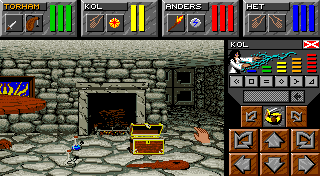
|
Gods

|
Hired Guns
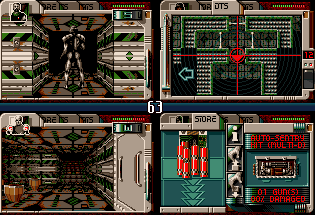
|
History Line
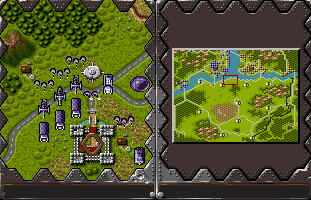
|
Battle Squadron
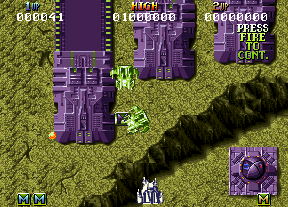
|
Indy 500
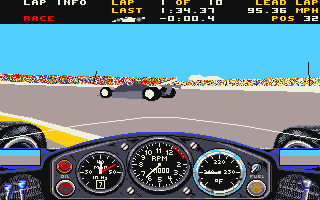
|
Midwinter
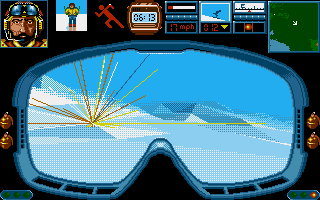
|
Nuclear War
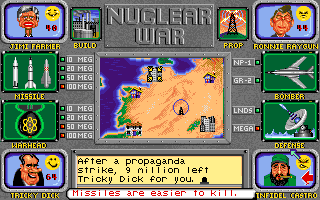
|
Marble Madness
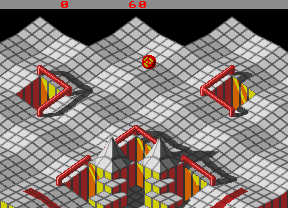
|
Overlord

|
Some Runners Up
Stunt Car Racer
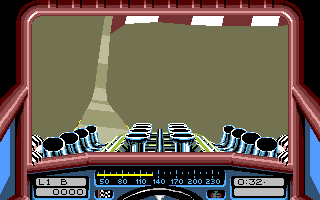
|
Wings

|
Speedball II
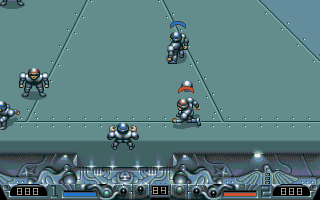
|
Full Metal Planet
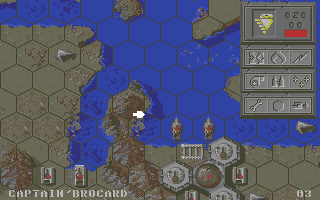
|
Home























